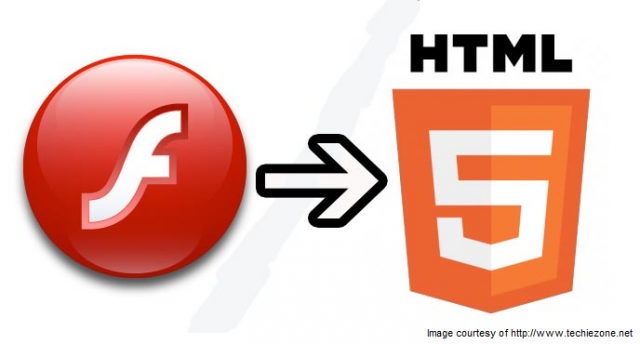Website design and development trends for 2018

Trends in website design and development constantly evolve at high-speed. What was popular yesterday may not be tomorrow, therefore it is important as a digital marketing agency to always be aware of which new trends are emerging, and which are disappearing.
2017 brought us a lot of new trends in website design and development. Some of these trends, such as mobile-first design and long-scrolling websites have changed the website design landscape and are almost ubiquitous. On the other hand, others have disappeared almost as fast as they appeared.
With 2017 almost behind us, and 2018 right around the corner, one thing is certain for the new year: users will continue to demand more than ever from their online experiences and organisations will need to find new ways to engage them.
In this article, we have gathered some of the predictions of what trends in website design and development look set to lead the way in 2018. If you are thinking of building or redesigning your organisation’s website in 2018, you will want to make sure that you are familiar with them.
Online customer support
2017 brought us the year of helpful chatbots, and since there are thousands of bots out there now it seems only logical that the quality of their services will be one of the next web development trends.
2016 was the year of chatbots. 2017 is the year of helpful chatbots. Since there are thousands of bots out now, the quality of their services will be the next web development trends for 2018.
It is predicted that 85% of all customer interactions will proceed without human assistance till 2020.
A customer service chatbot will become a must on almost every organisation’s website. Whether you are offering membership services, selling electronics or software development, a chatbot is a must.
Conversational interface has transformed the way that organisations interact with their customers, and having a chatbot on your company’s website ensures that you are in contact with your customers at any time and in any situation.
Having a customer service chatbot on your organisation’s website provides your client with a feeling of interacting with a human. The bot is intelligent enough to answer frequently asked questions, to redirect clients to their desired destination, to help them select the right product and to help them proceed with payments. Most importantly, all of this can be done without operating round-the-clock customer support department.
In 2018, customers will prefer organisations whose websites offer appropriate online assistance. Be ready for this by creating a customer support department or get a chatbot that will guide your customers through your organisation’s website.
Progressive web applications
Progressive web apps first appeared in 2015. In 2016 we saw the fast improvement in this technology, and as we approach 2018 progressive web applications has risen to become a major competitor of native mobile apps.
So what is a progressive web app you ask? A progressive web app (or PWA) are websites that feel like native mobile apps, and thanks to service workers, they can work offline, delivering a fantastic user experience.
Progressive web app users can save the shortcut to the website on their home screen is they use it frequently. As most information is stored in the cache, the app will load instantly. Service workers run in the background and ensure that the latest information is cached every time the device is connected to the internet. The ability to work without an internet connection is one of the greatest advantages of progressive web apps.
Throughout 2017, PWAs have gained traction and have become a true leading web development trend. Although the technology is still young, its prospects look very promising. For example, Washington Post reported a phenomenal almost fivefold increase in user engagement after implementing their own progressive web app.
After such inspiring examples, the world awaits the hype around the progressive web applications in 2018. Even though the technology is quite new, its prospects look very promising.
Static websites
You may remember static websites from way back when the web was new as all the first websites on the internet were static.
The era of dynamic websites followed shortly after, and with this websites became more functional and easier for people to update, even for people with no technical background. At the same time, the website development process became more complicated, as the extended functionality required communication with the server, therefore backend development was involved. Modern CMSs are in fact the actual dynamic websites.
These days, we are seeing the web return back to its roots and static websites looking set to be a trend once again in 2018. This time around static websites have been improved by generators which allow combining the advantages of a static website and a CMS. Many of the best examples of static websites are written in JavaScript, but there is a huge variety of static site generators written in other programming languages.
There are several reasons why static websites are back. They are faster, safer, and cheaper. And they can satisfy the needs of different types of businesses. The Hexo website is one of our favourites at Artonezero, and you can see it for yourself by clicking here.
Single-page websites
Another web development trend for 2018 that promotes simplicity is single-page websites. This involves putting all of the website’s content onto one long scrollable page, removing any clutter.
There are many advantages of single-page websites: they don’t challenge the website user with complex navigation, multi-level menu, and tons of text and all the essential information is contained on one page; the user only has to scroll to see it.
Of course, there are also limitations of single-page websites. Single-page websites won’t suit e-commerce projects and blogs. However, at the same time businesses can significantly benefit from presenting their services in a simplified and engaging manner.
When using a single-page website, the user is consuming all the information consecutively and moves through it in a calculated order. You can have certain control over the way the user learns more about your company and your services. For this reason, single-page websites are great for mobile use. An incredible example is National Geographic’s Yellowstone site.
Single-page websites offer a more user-friendly experience. At the same time, it allows you to reduce the cost of your whole website: design is cheaper, development is cheaper, and hosting is cheaper.
Single-page websites usually attract in combination with extraordinary design, and powerful accents: this formula can bring an impressive increase in conversion for any organisation. With this, we expect to see single-page websites gain a lot of traction in 2018.
Flash to HTML

In 2010, Steve Jobs published his opinions on Flash and its future on the Apple site. From this, it became quite apparent that this technology won’t last long. Jobs’ statement about Flash has seemed almost prophetic for the past two years now since YouTube defaulted to HTML5 players back in 2015.
One of the biggest drawbacks of Flash technology is its incompatibility with mobile devices, and subsequently, a huge amount of traffic is lost just because of this.
If your organisation still uses flash on your website, 2017 looks to be your final call to change this, and the best alternative is HTML5.
Moving into 2018, we can expect HTML5-based videos and games to continue to reach a wider audience, as the general tendency seems to be moving towards HTML5 becoming the universal format for all types of digital content. With this, it is no use being sentimental about your old Flash website; opt for an HTML5 site and not only will your site be much slicker, but more practical as it will correspond with the latest web development trends.
Push notifications for websites
Mobile apps notifications proved to be an extremely efficient means for organisations to boost user engagement. Recently this function has begun to be implemented for websites and is fast becoming a new web development trend.
The workflow for push notifications for websites is simple: a user visits a website and is offered to enable to push notifications. If they accept, the user will then be notified of any changes on the website (such as a new blog post), even after they have closed the tab for that website.
The major benefit of push notifications for websites is obvious – you can engage with your user round the clock with minimal effort. For this reason, push notifications can be more effective than emails, SMS and social media in delivering up-to-date information to your audience as they are quick, come on time, and don’t require any complicated actions. Overall, they are brilliantly user-friendly.
As push notifications for websites are still a very new technology, organisations have the chance to take advantage of the newness of this technology and become pioneers in 2018.
Motion UI
As we have seen in web design in recent years, simplicity is a trend that is fast covering many areas of the industry. It seems to be the case that users are tired of excessive GIFs and flashing ads, and because of this, websites with moderate design are getting more appreciation.
At the same time, sophisticated motion UI is becoming increasingly popular. Animations allow to add more style and enable you to distinguish your organisation’s website from thousands of competitors who have static UI.
Motion UI brings lots of ways to add some life to your organisation’s minimalistic web design. Consider pager header transitions, animated charts, nice hovers, modular scrolling, and background animations. There also many other elements that you can use to make your organisation’s web presence a more enjoyable experience for your customers.
PHP 7.x – Laravel 5.x
In 2017, PHP remained the popular choice for web backend development. The PHP programming language has even further improved its positions after the release of version 7.x, and the latest update of the PHP framework, Laravel 5.x is set to be a recognised web development trend in 2018.
Laravel is the most popular open-source PHP web framework, and its benefits can be fully experienced on dynamic websites with a complicated background.
Laravel offers many ready solutions for complex tasks, and the variety of existing packages makes the development process faster and more reliable. Regular updates also ensure that the framework complies with the current needs of website owners and the requirements of modern web development.
In addition, Laravel has a huge developer community. This means that you will never be alone if you encounter an issue.
Onwards into 2017!
Having an impressive online presence is becoming increasingly important for organisations, and we can expect this to be even more so the case in 2018.
With this, being ahead of web development trends is key to both attracting new customers, while also making sure that you retain your existing ones.
If our predictions are correct, we can expect 2018 to be a very exciting year for web design and development.
If you are thinking of creating or designing a new website for your organisation in 2018, get in touch with us today. We will provide you with a free consultancy to get your project moving in the right direction.
Finally, from all of us here at Artonezero, have a great festive season and an excellent start to 2018!



